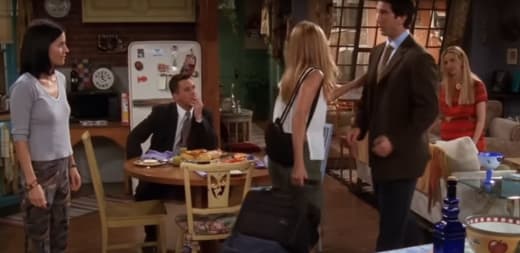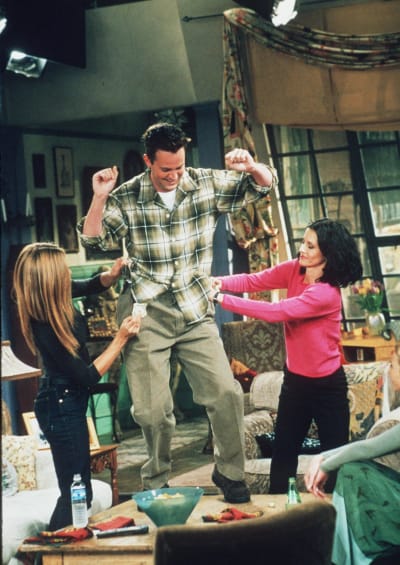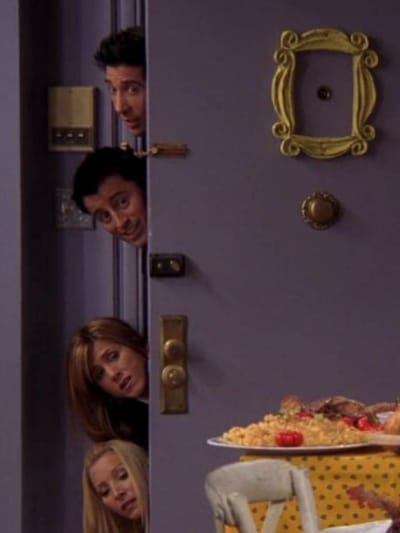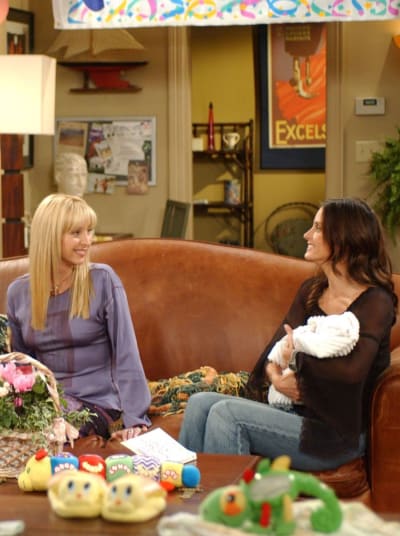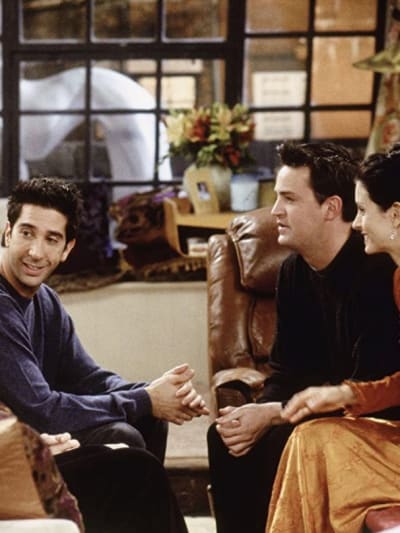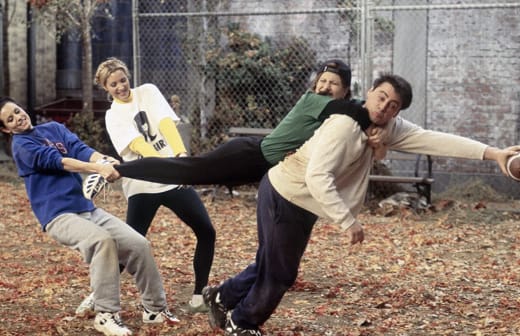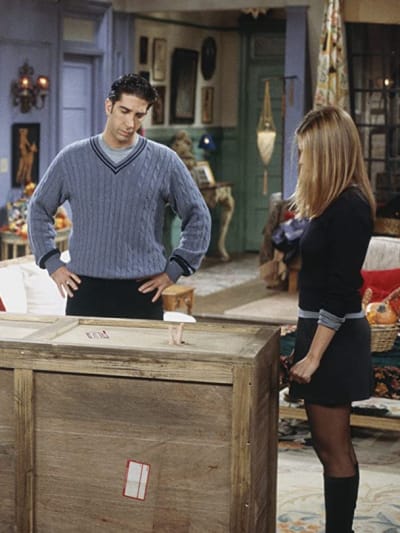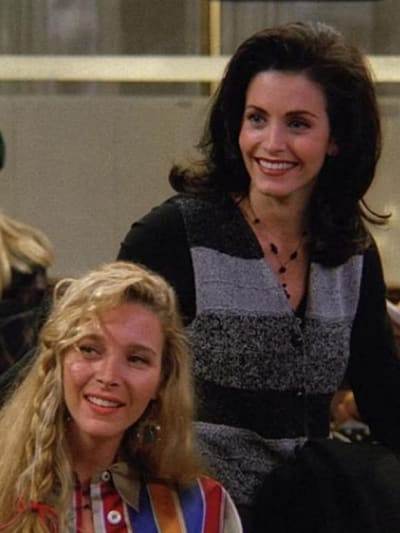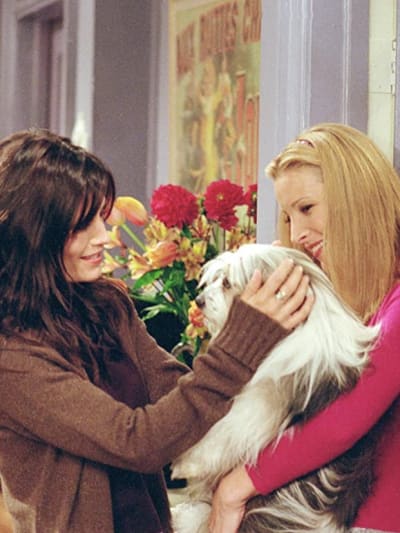It’s hard for fans who remember the original NBC airing of Friends to believe, but “The One Where The Show Turns Thirty” is almost here.
Friends was a ratings juggernaut from its 1994 premiere and ended its ten-year run with the fourth most-watched series finale in television history.
That would have been an impressive note for any show to go out on, but Friends went on to enjoy a charmed (and lucrative) afterlife in syndication for another decade before becoming a recent surprise hit with a whole new generation on Netflix.
So why haven’t we seen another sitcom make a similar impact in the past thirty years?
Friends was a reflection of its specific cultural moment, which also laid the foundation for our current comedic landscape, and there hasn’t been an equivalent upheaval since.
Friends Is a Victim Of Its Influence
If the show seems amusing but nothing special to indifferent viewers today, that’s because we’ve been immersed in its influence to the point where it’s now just the norm.
Or, as Miranda Priestly might put it, Friends is the sitcom version of the original Cerulean Blue color that trickled down from Oscar de la Renta’s runway to our everyday lumpy blue sweaters.
The early ’90s was a strange period for on-screen depictions of contemporary young adulthood.
Films like Slacker, Singles, and Reality Bites indicated that young people were leaning toward the counter-culture in dress and thought.
However, TV shows like Herman’s Head (a twenty-something man’s Inside Out), The Single Guy (a beta version of How I Met Your Mother), and Caroline in the City (tonally odd, like what a 70s kid imagined the 90s would be like) featured cartoonish characters in contrived situations.
Friends would have been groundbreaking even if it hadn’t debuted against such a dismal backdrop of network shows.
The show lived just outside so many cultural trends at the time that most people could find something to identify with.
Friends Was Really About Family
Television roommates were nothing new, but Friends underscored the concept of “found family” in a new way.
17 Bromances That Should’ve Been Romances
Aside from Phoebe Buffay, the characters had loving (but exasperating) parents and families of origin, so their close bond came from proximity and similar sensibilities and ages.
It was an adult friend group sharing new adventures in the big city without the worry of being broken up by graduation, marriage, or kids.
The Real World on MTV had already introduced the concept of six different personality types living together.
However, a big part of Friends’ success was how its actors created original personalities within their assigned archetypes.
Phoebe gave the “kooky” friend trope a very ’90s spin, while each actor gave the other, more open-ended character types a very specific life.
Could This Show BE Any More Sarcastic?
Irony was another significant factor in the show’s popularity, as humor in that vein was in high demand at the time.
Friends was a perfect storm of pop culture references, innovative cadence, and Chandler Bing.
A New Generation Saw Themselves In the Central Perk Six
The show was emblematic of (and perhaps notorious for) the normalization of a kind of extended adolescence that was relatively new to television and the culture at large.
It was groundbreaking at the time to see young adult characters who were cheerfully ambivalent about work and love.
They tried on different jobs and partners like so many velvet chokers, but their true transgression in the eyes of critics was their enjoyment of being unattached.
Like a few years later, with Sex and the City, it wasn’t as if happy and successful single ladies didn’t exist in real life.
You just never saw them on television, and that was more revolutionary than the sex.
(Well, almost.)
That was Rachel’s whole journey when she fell through the Rabbit Hole that was Central Perk to a life that was perhaps never supposed to be overtly countercultural (except when compared to Rachel’s neighborhood), but it unapologetically explored young adulthood that focused on work and dating.
Despite its rapid-fire pop culture references, Friends was timeless in a way that similar shows after it were not.
Hallmark’s Never Been Chris’d Puts Tyler Hynes and Pop Culture Nostalgia to Good Use
How I Met Your Mother stepped into the post-Friends sitcom vacuum of 2005 with a New York City setting and an appealing cast playing characters roughly eight years younger than their predecessors.
However, it seemed like if you were even just four years out in age from the characters, or more specifically, hadn’t gone to college within a certain four-year period, you’d be lost as to many of the show’s references.
It mined much the same narrative territory as Friends and had some great catchphrases, but it didn’t have the same generational scope.
If there was ever a seismic cultural shift with the potential to produce a sitcom as definitive as Friends, you’d think the mid-aughts introduction of the smartphone would be it.
Television’s innovation instead went in a dramatic direction, a trend that has continued to the present.
It Was a Different Time In the World of TV
Even so, the odds of another sitcom like Friends get lower when you remember how much of a *global* phenomenon the show was and still is.
That kind of scope and longevity speaks to more than just a cute haircut and some mentions of Hootie and the Blowfish.
To be fair, timing was also crucial to Friends’ widespread success: it was simply a different world in the 1990s.
It’s easy to forget how limited entertainment options were then compared to now and how tied we were to network television offerings.
That doesn’t negate the brilliance of Friends in terms of its writing, cast, and general magic. But it helps explain how this one show became such an influential phenomenon and came to represent a young generation.
Why Has Gen Z Produced So Few Prominent TV Stars?
Unfortunately, this also means that a similar landmark series won’t be produced in our current cycle of niche audiences.
Aside from its 90s trappings, Friends remains a character-focused show. Some situations the characters found themselves in, especially with dating, were painfully era-specific.
But the emotions behind those plotlines were timeless. The characters made many mistakes in love and work but were verbal about them in a way that wasn’t then common on TV.
This reflected the generally more self-aware mode of speech of young adults at the time, which evolved into our modern mode of discourse.
We owe (or can blame) Friends for much of our current cultural landscape. In 1994, it tapped into an emotional core that the world was ready for and has indirectly shaped the structure of sitcoms ever since.
We’ve Entered the Age of the Mockumentary
The mockumentary sitcom has been the most significant recent innovation in comedy series. The Office (both UK and US versions) was hugely influential in this style of show and came the closest to a sweeping popularity similar to that of Friends.
Satire has become a television comedy staple this century, with Arrested Development and 30 Rock as examples that also played with form.
It’s not like there haven’t been wildly popular sitcoms since Friends left the air; many viewers could rattle off ten favorites without thinking much about it.
It’s just that none has had the same cultural impact, comedic relevance, and cross-generational appeal.
That’s a lot of pressure to put on any show in any era.
But then again, no one saw Friends’ success coming 30 years ago, so there’s no reason lightning couldn’t strike twice.
I mean, could we BE more overdue for another great sitcom??
What do you think about Friends’ overall influence and the possibility of a similar show?
We’d love to know!
Paullette Gaudet is a staff writer for TV Fanatic. You can follow her on X.


